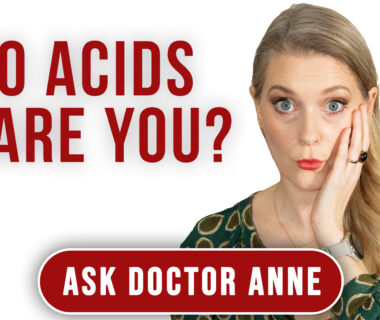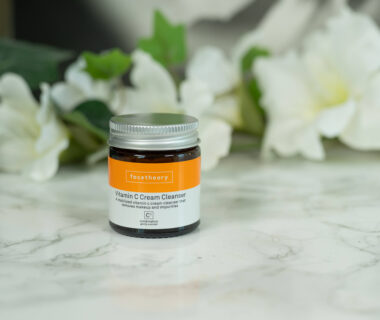ADVERTISEMENT INFO: PRODUCTS MENTIONED IN THIS POST ARE PR (GIFTED) AND LINKS USED ARE AFFILIATE LINKS. I RECEIVED NO MONEY TO WRITE THE BLOGPOST. PLEASE READ DISCLAIMER
April is rosacea awareness month, so I figured it would be the perfect time to share some skincare tips for rosacea prone skin. Now I don’t suffer from rosacea, so I can’t speak from experience here, but I have a friend that does and that late last year approached me asking for help building her routine.
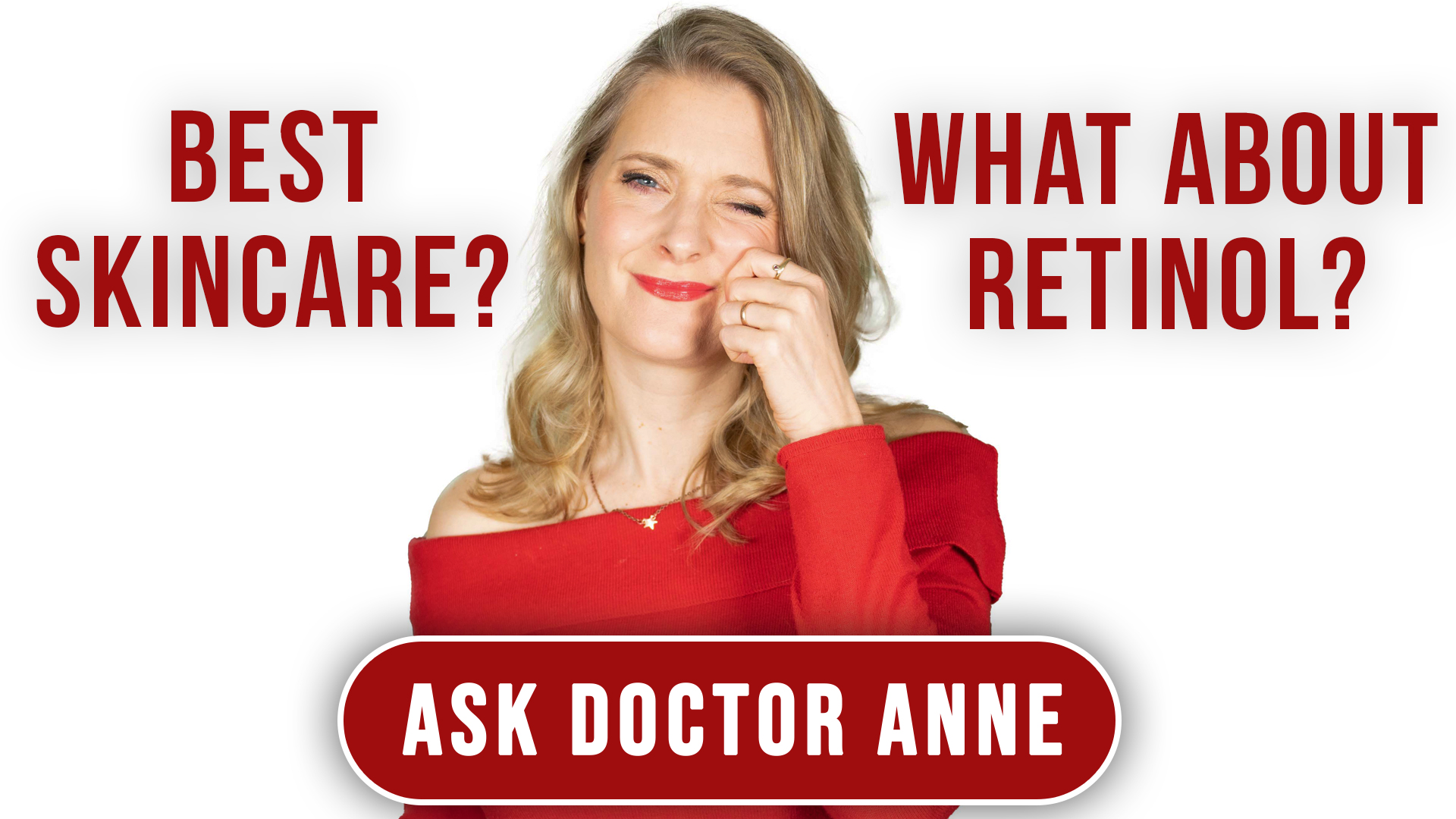
So after we dive into the theory behind rosacea skincare today, I will share the routine we built for her next week. Putting the theory into praxis, if you will!
But first, let’s learn about rosacea!
What is Rosacea?
Rosacea is a chronic inflammatory skin condition that is characterized by redness and prolonged blushing in the first stage and usually affects the middle of the face more than the side parts. Other than the redness there can be acne like spots, but no comedones, which is the main way to differentiate the two. In the long run, persistent redness, skin thickening and deformities are possible.
The clinical classification of rosacea differentiates between four different types:
- Erythemato-telangiectatic (from erythema = redness and telangiectasia = small, irreversibly dilated blood vessels on the skin’s surface that often look like spiders). As the name already hints it is characterized through redness in the central face, persistent flushing and these small, but visible vessels
- Papulo-pustular This form looks similar to acne, with inflamed papules and pustules also mainly in the center of the face, think cheeks, chin and forehead, usually on skin that is overall redder than normal
- Phymatous In this form the skin thickening, especially in the area of the sebaceous glands is the main focus. It often manifests as tissue hyperplasia or tissue growth around the nose which can get really large and deformed, a condition called a rhinophyma
- Ocular This form only affects the eyes, with dryness, irritation, conjunctival redness and crusty eyelids being the main issue here.
In reality, these forms aren’t always clearly separated, and often prolonged blushing is the first warning sign for a long time until pustules or telangiectasia appears.

Who is at risk of getting rosacea?
The pathogenesis behind the disease still isn’t fully understood, but we do know that there is a genetic component, meaning it often runs in the family and that it is caused by abnormally processed inflammatory triggers via activation of the neutrophils that cause prolonged and chronic inflammation with changes in the skin.
Other contributing factors are a tendency for prolonged vasodilation, especially on the skin’s surface, so called Demodex Mites, tiny creatures living and feeding off your skin whose poop causes inflammation and a damaged skin barrier. The last one is a little controversial as the chronic inflammation leads to an impaired skin barrier as well, so you can’t exactly be sure which one comes first. (More info: 5 things you can do to repair your skin barrier)
It is much more common in fair skin types (and arguably harder to spot in dark skins) and affects more women than men. It also often appears later on in life, in your 30s and often happens in recurrent phases with initially complete remission.
Why treating rosacea early is important
Similar to acne, suffering from rosacea has a tremendous impact on mental health and reduces quality of life, both due to the physical changes and due to the fact that rosacea skin often hurts. It feels tight and anything you put on top stings or burns – that alone should be reason to treat it.
What some people are not aware of though is that while in the beginning, the redness completely disappears again, over time permanent changes can occur. Persisting redness that never goes away, broken blood vessels or skin deformities through tissue growth or skin thickening, all that could happen if rosacea goes untreated for prolonged periods of time.
And while there are surgical ways or procedures to get rid of that excess tissue or the blood vessels, prevention is always much easier than treating them.
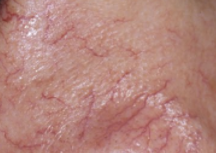
Lifestyle changes to consider when you suffer from rosacea
As mentioned before, the pathophysiology of rosacea isn’t fully understood yet, so triggers might be different for different people. Often weather changes, especially extreme cold or wind can trigger an episode, but also prolonged UV exposure, heat through sauna or increased body temperature through working out. In many people spicy food and alcohol trigger the redness, as well as other foods that act as histamine releasers, releasing a transmitter that leads to vasodilation in everyone, but to overreaction with consecutive inflammation and redness in people prone to rosacea.
On top of that anything that on its own might trigger inflammation, like certain essential oils, fragrant components with a high allergic potential, stripping cleansers, physical cleansing devices like brushes or strong actives like exfoliants or retinoids, all that has a chance of triggering rosacea or making the condition worse.
Which out of all the things mentioned here are relevant for you needs to be determined by observation.
How do I manage rosacea with skincare
First and most important: If you have active rosacea, your best bet is to see a dermatologist for prescription treatment. While some of the ingredients used to treat rosacea, like Azelaic Acid, are also available without prescription in lower concentrations, I do not recommend experimenting on your own. Same as with acne: Anything that has the potential to permanently change your skin should be treated by a professional as early as possible.
Potential prescriptions might be oral antibiotics, topical Azelaic Acid or topical Soolantra (aka Ivermectin) to get rid of the Demodex mites.
With that out of the way though, there are a lot of things you can do to keep your skin calm in between rosacea episodes or, sometimes more important, to make your skin feel good while you are on prescription Because while these medications are effective, they are often neither cosmetically pleasing nor do they quickly help mitigate the side effects, the tightness, burning and stinging sensation.
So think of your skincare regime as prevention and support, but not as the main player in the treatment of your rosacea. (I will list some product recommendations right at the end of this post)
The key components should be:
Simplicity
Use as little steps as possible: Cleanser, moisturizer, sunscreen. Yes, you can add a serum or face mist or whatever once your skin is calm if that is what you want, but whenever it starts acting up, take it back to basics. (More info: Is Skinimalism the key to healthy skin?)
Gentleness
A gentle, non-stripping cleanser, no tools like face brushes, not even vigorously rubbing your face dry with a towel. Treat your face like a delicate fabric, with lukewarm water and the gentlest handling you can
Repairing actives
When picking your moisturizer, look for ingredients that repair the skin barrier, reduce inflammation and prevent Transepidermal Water Loss. Ceramides, Colloidal Oatmeal, Niacinamide and occlusives will most likely make your skin feel calm and support your treatment. Another one that has shown promising results is Licorice Root Extract, which apparently has good anti-inflammatory effects. (More info: Niacinamide in skincare explained and Colloidal Oatmeal in skincare explained)
Azelaic Acid
If your skin is off prescription, but you feel like you need a little help to keep it that way, incorporating Azelaic Acid into your routine for gentle exfoliation and potential anti-rosacea effects. It is also something you could try if you have mild symptoms and don’t want to go back to the derm. But again, if it doesn’t get better quickly, don’t experiment, see a professional for prescription!
Sunscreen
UV exposure will cause inflammation, so wearing your SPF regularly is key to avoid rosacea episodes. At the same time, many people will react with irritation to the older chemical sunscreen filters like Avobenzone or Octocrylene, which is why you might want to opt for mineral sunscreens if you live in the US. An added benefit here is that many of the mineral filters will have some color to them to mask white cast – this is not therapeutic, but will cover up some of the redness.
Always remember, the main goal with your routine should be to keep your skin hydrated and calm so you can use the prescription if needed – you might prevent flare-ups, but you won’t cure rosacea with cosmetics.
Can I use retinol when I have rosacea?
With retinol being advertised as key component in anti-aging skincare, it comes as no surprise that many feel like they are missing out if they aren’t using it. So the question is, can I use retinol when I suffer from rosacea?
The answer is: It depends.
If your skin has an active rosacea flare-up, you shouldn’t. The best thing to do here is to calm your skin down, not to potentially irritate it further.
If your skin is in a calm and solid state though, and you feel you have figured out your triggers and know how to avoid them, there is no harm in trying. Not with prescription strength, but with one of the many gentle options available – one example is the Dr Sam’s Flawless Nightly Serum (30 ml for 44 £, fragrance-free, vegan, full review here) that features both Azelaic Acid and Granactive Retinoid. Proceed with caution, increase the frequency slowly and you might be able to incorporate it into your routine. (More info: How to introduce retinol with minimal irritation)
If it doesn’t work though, don’t worry. Reducing the inflammation in your skin and wearing regular sunscreen is the best thing you can do anyway.
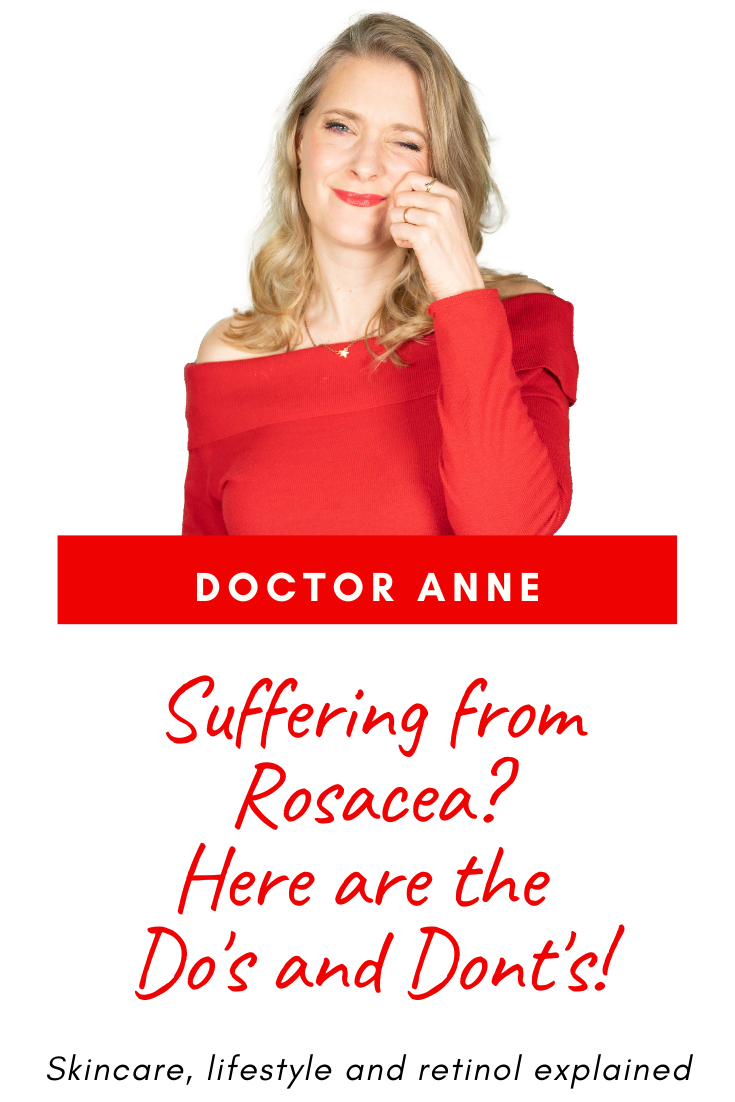
Shop my recommendations
Don’t forget to check out the Discount Code Page on top if you want to save some money on your next skincare purchase.
If you want to get a vote in the next Ask Doctor Anne Topic, Ingredient Spotlight or product I review, don’t forget you can head over to my Patreon account to get more involved!
